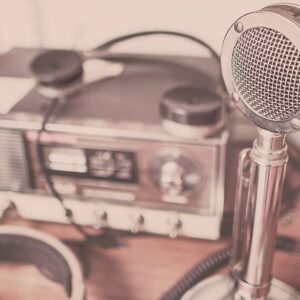
Getting Started with Amateur Radio Operations
Welcome to the fascinating world of ham radio! Also known as amateur radio, it’s a hobby that allows individuals to communicate wirelessly with others across the globe. Whether you’re interested in emergency communications, experimenting with electronics, or simply meeting fellow enthusiasts, ham radio has something for everyone. This beginner’s guide will introduce you to the basics and help you get started.
What is Ham Radio?
Ham radio is a hobby where licensed operators use radio frequencies to communicate with each other. Unlike other radio services, ham radio operators can build their equipment and antennas, making it a unique and engaging experience.
Why Become a Ham Radio Operator?
There are numerous reasons to get involved in ham radio:
- Communication: Connect with people locally, nationally, or internationally.
- Emergency Preparedness: Ham radio can be a lifeline during disasters when other communication methods fail.
- Technical Learning: Discover electronics, radio theory, and antenna design.
- Social Connections: Join a vibrant community of enthusiasts with diverse interests.
Essential Equipment for Ham Radio:
Transceiver (Radio):
The central piece of equipment for transmitting and receiving radio signals. It’s crucial to choose a transceiver that aligns with your preferred frequency bands and modes of operation. Consider features like power output, frequency coverage, and ease of use.
Antenna:
An antenna is essential for transmitting and receiving signals. The type of antenna varies based on factors like frequency range, space available for installation, and operating conditions. Common types include wire antennas (such as dipoles or end-fed antennas), vertical antennas, Yagi-Uda beams, and more.
Power Supply:
A reliable power supply is necessary to operate your radio equipment. This could be a battery pack for portable operations or a dedicated power supply unit for home-based setups.
SWR Meter (Standing Wave Ratio Meter):
This device measures the efficiency of your antenna system and helps adjust the antenna for optimal performance. It ensures that the transmitter is matching the antenna system’s impedance, minimizing signal reflections.
Coaxial Cable:
Used to connect the transceiver to the antenna. High-quality coaxial cable reduces signal loss and interference.
Earphones/Headphones:
For clear and private reception, especially in noisy environments.
Microphone and/or Morse Code Key:
Depending on your preferred mode of communication, having a microphone for voice transmission and a Morse code key for CW (Continuous Wave) operation is necessary.
Basic Tools:
A set of basic tools for installation, maintenance, and adjustments of equipment and antennas. This includes screwdrivers, pliers, wire cutters, etc.
Shack Accessories:
Depending on your setup, you might need additional accessories such as an antenna tuner, amplifier, filters, or a computer for digital modes.
Remember, the choice of equipment might vary based on your interests within the realm of Ham Radio, whether it’s DXing, contesting, emergency communications, or experimentation. It’s also advisable to start with basic, reliable equipment and gradually expand based on your experience and needs.
Licensing
To operate a ham radio legally, you’ll need to obtain an amateur radio license from your country’s regulatory authority (e.g., FCC in the USA, Ofcom in the UK). The license ensures you understand the rules and regulations governing the use of radio frequencies. There are typically multiple license classes, each granting different privileges and requiring different levels of technical knowledge. Start with the entry-level license to get started.
United Kingdom (UK):
In the UK, Ofcom is responsible for issuing Amateur Radio licenses.
- Ofcom – Amateur Radio Licensing (UK):
- Website: Ofcom Amateur Radio Licensing
- Information about obtaining an Amateur Radio license, application process, license classes, and resources for studying for the exam can be found on the Ofcom website.
United States of America (USA):
In the USA, the Federal Communications Commission (FCC) handles Amateur Radio licenses.
- FCC – Amateur Radio Service (USA):
- Website: FCC Amateur Radio Service
- The FCC website provides information on getting an Amateur Radio license in the USA, including license classes, exam resources, study materials, and the application process.
Both Ofcom (UK) and FCC (USA) websites offer comprehensive information regarding Ham Radio licensing, exam schedules, study guides, and application procedures. You can find study materials, practice exams, and guidance on preparing for the licensing exam on these websites.
How to Get Started
Follow these steps to become a licensed ham radio operator:
- Study: Obtain study materials and resources to prepare for the licensing exam. Many online courses, books, and practice exams are available.
- Find a Test Session: Locate a local exam session where you can take your licensing exam. These sessions are often organized by amateur radio clubs.
- Pass the Exam: The exam usually covers regulations, operating procedures, and basic electronics. Passing the exam grants you a callsign, which is your unique identifier on the airwaves.
- Get Equipment: Start with a basic transceiver (radio) for the appropriate frequency bands allowed by your license class. You can buy new or used equipment. Consider starting with VHF/UHF radios, as they are more accessible and suitable for local communications.
- Set Up Antennas: Antennas are crucial for transmitting and receiving signals. Research and set up antennas suitable for your location and license privileges.
On the Air
Once you have your license and equipment ready, you can start operating:
- Listen First: Listen to existing conversations to get a sense of the etiquette and operating procedures.
- Join Local Nets: Participate in local radio nets, which are scheduled gatherings of ham radio operators on a specific frequency to discuss various topics.
- Explore Modes: Ham radio supports various communication modes, such as voice (Single Sideband – SSB), Morse code (CW), digital modes, and more. Experiment with different modes to find your preference.
- Reach Out Further: As you gain confidence and experience, try making contacts with other operators outside your local area. Join “DXing” (making long-distance contacts) and “contest” events to improve your skills.
Continual Learning
Ham radio is a hobby of constant learning and experimentation. Don’t hesitate to ask questions and seek advice from experienced operators. Consider joining local clubs or online communities to connect with others who share your interests. Remember, ham radio is about having fun and exploring the boundaries of communication. Enjoy the journey, make new friends, and embrace the excitement of this incredible hobby!
Conclusion
Entering the realm of Ham Radio opens up a world of communication, learning, and exploration. Obtaining your license, acquiring the necessary equipment, and joining the vibrant community are the initial steps towards enjoying the multifaceted aspects of Amateur Radio. As you embark on this journey, remember to embrace learning, explore various communication modes, and most importantly, have fun experimenting and connecting with fellow enthusiasts!
That’s All Folks!
You can explore more of our guides on amateur radio here: Beginners Guide to Amateur Radio




